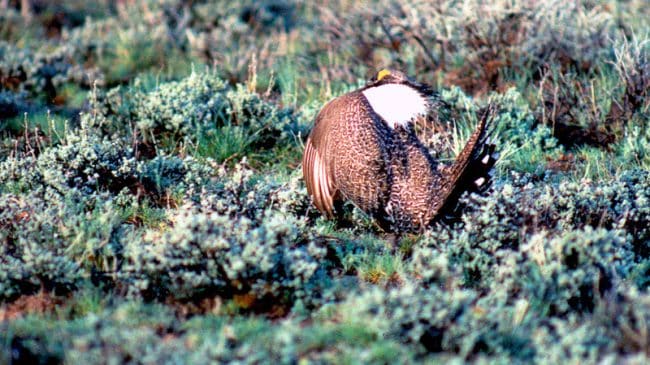The recent controversial listing of the lesser prairie chicken under the Endangered Species Act in Kansas, Colorado, New Mexico, Oklahoma and Texas will have a significant economic impact on the oil, gas, and agriculture industries, and has already prompted contentious court battles.
The Attorneys General of Oklahoma and Kansas have sued the federal government, claiming listing occurred without proper state input. In May the Kansas legislature passed, and the Governor signed, a bill challenging the federal government’s right to regulate non-migratory wildlife such as the lesser prairie chicken. Meanwhile, several environmental pressure groups are suing the federal government for allegedly not providing stringent enough protection for the bird.
Lost in all this controversy, however, is a more basic question: will the Endangered Species Act actually be good for the prairie chicken?
Most people assume the Endangered Species Act helps species because that’s what it is supposed to do. Unfortunately, there is a big gap between this ideal and the reality on the ground. There is a large and growing body of evidence that the Endangered Species Act is harming the very species it’s supposed to protect, especially on private lands. It discourages conservation because its substantial penalties-$100,000 and/or one year in jail for harming a single bird, egg, or even habitat-turn species into financial liabilities. As a result, landowners seek to reduce their liabilities by getting rid of species and their habitat, either through illegal means or a wide variety of legal methods.
That’s why the ratio of declining to improving species on private lands is 9 to 1, while on federal lands it is a much-better 1.5 to 1. America’s landowners are the key to successful endangered species conservation because nearly 80 percent of endangered species have some or all of their habitat on private land, compared with 50 percent on federal land.
For a species like the lesser prairie chicken that depends almost exclusively on private land, the degree of cooperation by landowners will determine the bird’s fate. Endangered species in the U.S. are spread across hundreds-of-millions of acres, often in rural areas far from prying eyes. Landowners who want to rid their properties of endangered species and habitat have an enormous advantage over the limited number of enforcement officials. The Act’s punishment-based approach is the exact opposite of what should occur if the goal is successful conservation of imperiled species.
Conservation is a worthy cause, and most landowners, but for being punished by the Act, would be happy to harbor endangered species. People often have strong ties to their land, including a sense of stewardship. Tragically, the Endangered Species Act discourages such goodwill while its diehard proponents seem content to play chicken with landowners and the possible extinction of species.
This country needs a new approach to conserving endangered species based on two principles. First, remove the penalties that have proven so harmful to species. Second, reward landowners for harboring endangered species. Most Americans can understand this commonsense approach. After all, if you want to achieve something, especially if it depends of the support and cooperation of citizens, you reward it, not punish it.
Currently, there are two plans in play to conserve the prairie chicken that move away from the counterproductive disincentive-based method toward a successful incentive-based approach. Unfortunately, the more innovative plan, known as the Stakeholder Conservation Strategy, has been put on the back burner by U.S Fish & Wildlife Service and is awaiting the agency’s approval.
The outlook for endangered species in this country could be so much brighter if we are willing to let go of the past 40 years of the Endangered Species Act’s failed approach of punishing landowners and instead embrace a future in which landowners harboring endangered species are rewarded.
Brian Seasholes is director of the Endangered Species Project at Reason Foundation.
